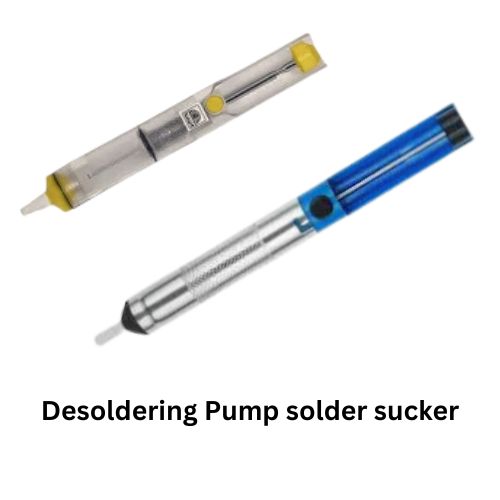A desoldering pump (also known as a solder sucker) is a manual tool used to remove solder from a printed circuit board (PCB), especially when desoldering electronic components for repair, replacement, or recycling.
🔧 Description:
A desoldering pump typically consists of:
-
Body/Cylinder: Usually made of plastic or metal, it houses a spring-loaded piston.
-
Nozzle: A heat-resistant tip (often made of silicone or Teflon) that touches the molten solder.
-
Plunger/Button: Used to arm the spring mechanism and release it.
🛠️ How It Works:
-
Heat the solder joint with a soldering iron until the solder melts.
-
Press the plunger to load the spring in the pump.
-
Place the nozzle near or on the molten solder.
-
Press the release button—this activates the spring-loaded piston, creating a vacuum.
-
The molten solder is sucked into the pump’s chamber.
-
Empty the pump by pressing the plunger fully and shaking out the collected solder.
✅ Advantages:
-
Inexpensive and reusable.
-
Handy for through-hole component removal.
-
No electricity or batteries required.
⚠️ Tips for Use:
-
Clean the nozzle regularly to prevent clogging.
-
Use in conjunction with solder wick for better results on stubborn joints.
-
Be careful not to damage PCB pads while desoldering.


Reviews
Clear filtersThere are no reviews yet.